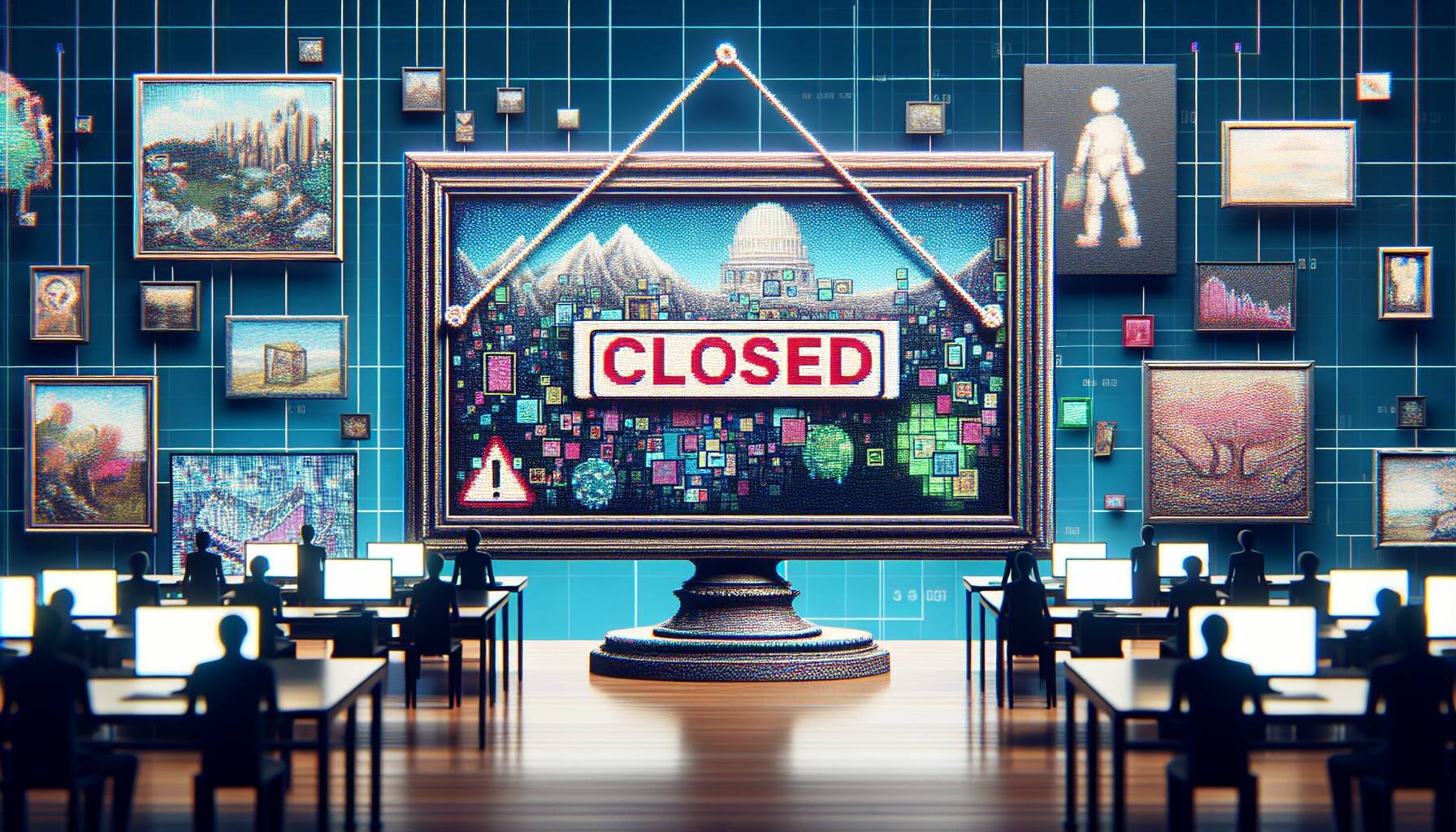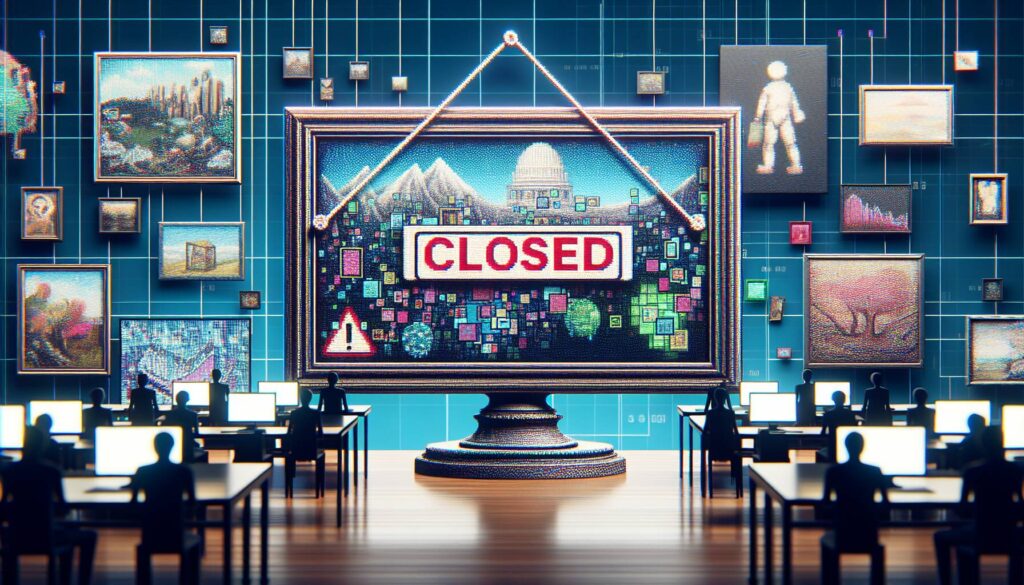In a significant shift within the art world, Christie’s has decided to close its digital art department, marking the end of an era for Non-Fungible Tokens (NFTs) in traditional auctions. This decision was highlighted in a report by Now Media, which detailed the recent layoffs of two staff members, including the vice president of digital art, Nicole Sales Giles.
Giles was a key figure in Christie’s exploration of the NFT market, particularly showcased at the Art+Tech Summit held in Hong Kong last year during Fintech Week. She emphasized the unique aspect of community engagement in digital art, a departure from the traditional valuation methods used for physical artworks. “What’s unique with digital art is the community engagement aspect, which absolutely comes into play in a way it never has with traditional art,” she articulated at the summit.
“I do not think at this very moment we have a very standardized understanding of [digital art’s] value,”
said Angelle Siyang-Le, director of Art Basel Hong Kong, reflecting the ongoing uncertainties in establishing solid valuation frameworks for digital artifacts. As Christie’s retreats from this venture, the figures tell a story of a market struggling for stability—NFT trading volume plummeted by 45% last quarter to $867 million, despite a notable increase in sales counts.
The NFT landscape has been characterized by fleeting highs and significant downturns; major collections like CryptoPunks and Bored Apes have seen their values decline sharply compared to the recent surge in Ethereum prices. Observers on platforms like X suggest that Christie’s move does not signify defeat but rather a pragmatic response to evolving market dynamics, as NFTs begin to integrate more seamlessly into the contemporary art landscape rather than existing as a standalone collectible category.
This closure raises questions about the future of NFTs and whether they can establish a robust market presence, or if they will continue to act merely as an add-on to the traditional art world.

Christie’s Digital Art Department Closure
Key points regarding the impact of Christie’s closure of its digital art department on the NFT market and readers:
- Shutter of Digital Art Department: Christie’s has closed its digital art department, signaling a significant shift in its approach to NFTs.
- Influence of Nicole Sales Giles: The departure of key staff, including vice president Nicole Sales Giles, marks the end of a prominent era for Christie’s digital initiatives.
- Community Engagement in Digital Art: Giles emphasized the importance of community engagement in valuing digital art, a factor not as prevalent in traditional art.
- Uncertain Value Standards: Experts acknowledge the lack of standardized understanding for the value of digital art, which affects consumer confidence and investment.
- Declining NFT Trading Volume: NFT trading volume dropped by 45%, raising concerns about the sustainability of the market.
- Price Drops in Blue Chip Collections: Significant decreases in floor prices of major NFT collections suggest weakening interest compared to when they peaked.
- Mainstream Absorption of NFTs: Observers argue that NFTs are being integrated into contemporary art sales, rather than remaining a separate collectible category.
- Risk of NFT Market Fragility: The closure indicates that without firmer valuations and standards, NFTs may struggle to establish themselves as a durable market entity.
“…without firmer valuations and clearer standards, NFTs risk remaining an add-on to contemporary art rather than sustaining a market of their own.”
Christie’s Digital Art Department Closure: A Turning Point in the NFT Market
Christie’s recent decision to close its digital art department marks a significant shift in the evolving landscape of Non-Fungible Tokens (NFTs). This move offers critical insights into the current state of NFTs within the art market and highlights the growing challenges faced by digital firsts in a space traditionally dominated by physical art forms.
Competitive Advantages: One noteworthy aspect of Christie’s endeavor was its effort to bring the same valuation rigor to NFTs as applied to traditional art. This ambition positioned Christie’s as a pioneer in legitimizing digital art within established auction frameworks. Moreover, the integration of community engagement in assessing digital art’s value was an innovative approach that drew attention and engagement from tech-savvy collectors and crypto enthusiasts alike.
Disadvantages: However, the past year has revealed the volatility inherent in the NFT sector. The drastic 45% decline in NFT trading volume, contrasted with a significant rise in sales counts, underscores the instability of valuations and raises concerns over the sustainability of this market. Blue-chip NFTs, once seen as investment gold, now languish below peak prices, reflecting a shaky foundation in a fledgling market. This instability is worsened by the absence of standardized value assessments, leading to a perception that NFTs may struggle to stand alone, instead becoming merely an accessory to traditional contemporary art.
The impact of Christie’s closure could be felt across various stakeholders in the art world. Collectors and investors in NFTs may find increased skepticism toward the market, potentially deterring new entrants. Conversely, established contemporary artists and galleries could benefit as the market absorbs NFTs into mainstream art sales, potentially expanding their audience and market share. On the flip side, emerging digital artists might face challenges as their works struggle to secure the same recognition and valuation as traditional pieces, swaying the attention back to physical art forms.














